The Great Blue Heron
06-01-2017
Writer(s): Dan Shepardson
I thought for this month's blog I would talk about the Great Blue Heron (Ardea herodias), or Great Blue for short. It is one of my favorite herons to watch and photograph. I spend hours every year at a local wetlands, Celery Bog Nature Area, West Lafayette, IN, photographing the Great Blue's behaviors and activities. They are amazing birds to watch, and if you have the patience you can capture some interesting behavioral expressions and body contortions. It does take patience, for Great Blues stand motionless for what seems like hours waiting to snag a meal--frog, fish, or crayfish--from the water. They also eat snakes and mice. The Great Blue often moves slowly through the water, but when they move, they put on a display well worth the time spent waiting and watching. The Great Blue is a wary bird, however, and is easily spooked or flushed, and so it is not easy to sneak up on. It requires a big lens to photograph.
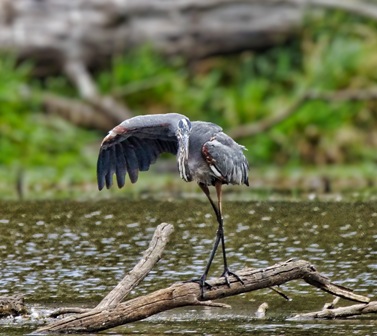
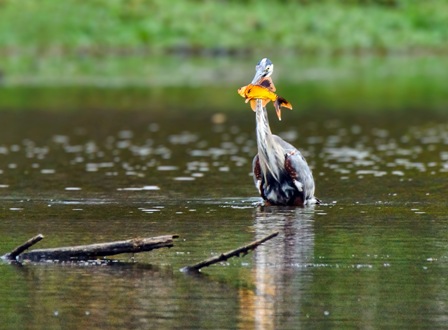
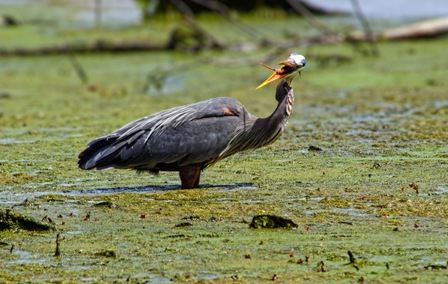
The Great Blue is the largest and most widely distributed wading bird in North America. It is common to wetlands and is found along ponds, rivers, and streams searching for prey. I find that its size and blue-gray color give the Great Blue its majestic look as it stands tall above the water. Its head and crown are white divided by a black stripe. Its yellow eyes are intense. Its long neck, often held in a "S" shaped curl, is always ready to spring outwards, thrusting its large yellow dagger shaped bill towards its prey, either like a tweezers or a spear. Because of its size, I am always astonished that it can fly, taking every inch of its 5 foot wingspan to generate lift. It appears to fly in slow motion with strong and deliberate wing beats, gently gliding through the air. It nests in colonies, building stick nests atop of trees. Although mostly a quiet bird, its squawk is loud and raspy. I find it annoying, yet satisfying to know that the Great Blue is present.
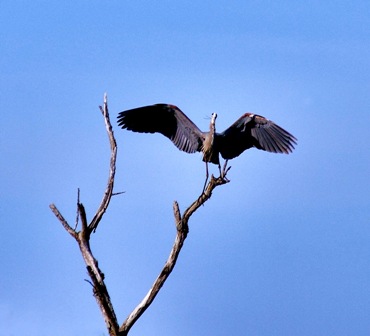
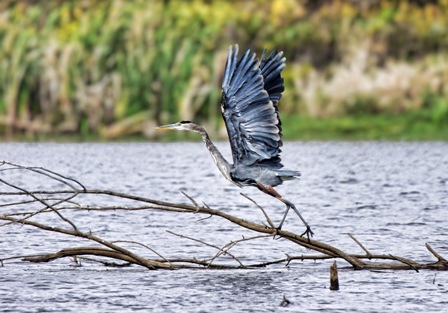
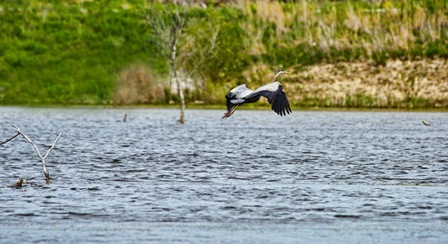
About my photos: All images were taken at Celery Bog, using a large 600mm zoom lens.